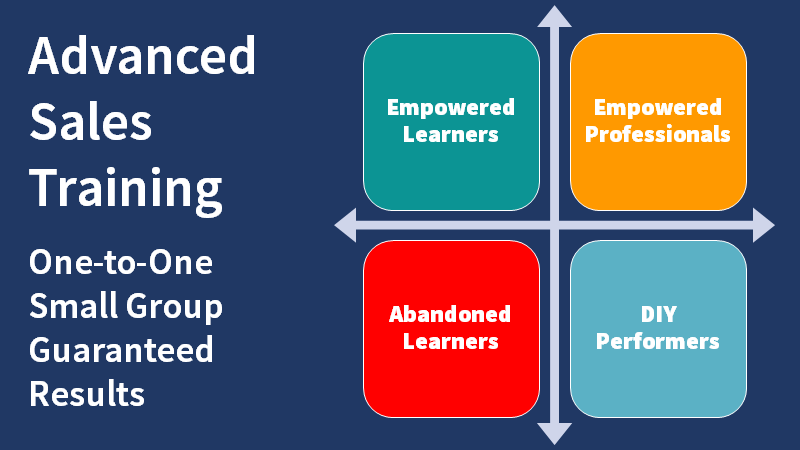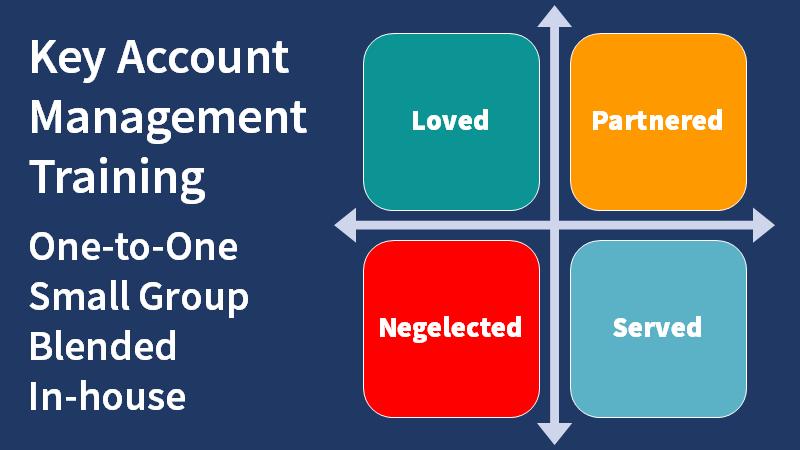Three sales call rules and CLEAR guidelines for consultative discovery calls.

One of the reasons that I and many others I know are attracted to selling as a profession, is the freedom that most sales jobs offer. The idea of my sales call strategy being dictated by a process, method, or set of rules doesn't sit well in my mind.
Rules are restrictions that many resent, ignore, or break, just because they can. I mean the kind of policies that seem to restrict freedom rather than those that provide a foundation for civilisation.
Some Sales Call Examples Include:
- “We only buy from those on our approved suppliers' list.”
- “You must speak to a nominated contact and can’t speak with those involved in the decision.”
- “It’s our policy not to divulge budget details”.
Despite having a well-developed dislike for any regulations that seem unnecessary to me, I have three consultative selling 'must do' rules that I do my best to obey so I use them to guide my sales call preparation. These three best practice sales call rules, save me from wasting selling effort. We teach them in many of our training courses.
First, what is a sales call?
The first thing people think of about sales calls is cold calling. While some sales calls are cold this doesn't apply to all calls. In this article, we are focusing on the attempt to have an authentic conversation with a potential customer about things the caller might be able to help with. It might be a cold call to a stranger or a call to a prospect where a dialogue has already been established.
The Three Discovery Rules:
1. Make no assumptions
On the surface, this first rule seems like common sense. While this may be so, it isn’t common practice. The first opportunity to make an assumption stems from language. Despite having a common language, people develop independent interpretations of the words and phrases they use. For instance, the term, ‘a communication problem’ even in the context of telephone use, could have dozens of meanings.
When we think we know what someone means by the use of a particular term, acronym, phrase, or jargon, we are in danger of breaking the first rule.
If you could listen in on a conversation and adopt a devil's advocate perspective, you would find it easy to list the assumptions made when the participants talk about solutions.
People often begin by discussing the product or service that might provide a solution. This presumes a lot about the nature of the problem or opportunity. The real cause for buying something is often, never discussed.
Before you laugh and think, “It wouldn't be me falling into this trap”, ask yourself how often you have found it difficult to persuade a manager that your sales forecast was realistic.
It is easy to say, “I’ll make no assumptions” and surprisingly difficult to adhere to the commitment.
In thousands of meetings, training courses, and training simulations, we have observed how difficult it is for a salesperson to avoid assuming they know the underlying reasons for positions or statements.
Even experienced veterans leap to conclusions that could lead to disastrous results.
To help buyers and sellers minimise the amount of guesswork, we developed a sales process labelled ‘CLEAR’. Before I explain the five ‘CLEAR’ sales process stages, I need to explain the other two sales call rules.
2. Declare your intent to make no assumptions
Agree at the beginning of a meeting to try to eliminate each assumption as the potential occurs. This will double your chances of getting cooperation when you press for a better understanding of a need or requirement.
At the beginning of a meeting, it is easy to gain agreement on this point. No one wants to guess.
It is a trivial thing and easy to forget. If you don’t make a point of doing it and haven't prepared a way to ask smoothly, you are likely to overlook or consciously discard this step.
3. Don't talk about your products, services, or solutions
The third sales call rule is harder to keep than the first.
After all, what are you there to do if it is not to talk about what you have to sell?
Even if you have learnt that your priority is understanding the circumstances that prompted the interest, customers prefer to talk about what they want to buy. It is the easy path. It doesn't involve the pain of considering what isn't known and what must be uncovered to guarantee a good outcome for both buyer and seller.
Only when the reasons for the need have been understood and the value of satisfying the need has been qualified, should a sales call progress to discussing proof that what is being sold would deliver the necessary results.
Sales Call Process
The sales call process must serve the customer's buying process, just as the solution must resolve the problem.
It is in the interests of both parties to get this part right. Failure will lead to unpleasant or catastrophic consequences for buyers and sellers alike.
Business-to-business sellers cannot afford unhappy customers. In most cases, buyers will blame suppliers and the salesperson for performance failure whether deserved or not.
CLEAR is a sales call process guide that helps transform an adversarial situation into a collaboration. It is a sales method that adds value for the customer and almost always leads to a better result for both parties.
CLEAR stands for Circumstances, Leverage, Expand, Advantage, and Requirement.
Barriers are often thrown up when the three rules and the CLEAR steps are adhered to. They are the same barriers that arise when using other methods of selling.
Common Buyer Barriers
Reasons: Buyers won't reveal the underlying reasons for their interest or requirement.
This may be because the person tasked with speaking to potential suppliers doesn’t have all the information. Sometimes the customers think revealing their issues to potential suppliers is not in their best interests. Another reason is a lack of trust in a particular seller or all sellers in general.
Impact: They will disclose the reasons but can't or won't reveal the extent of the effect on their business.
In many cases, the customer hasn't measured the impact and doesn't have a good assessment of the business value that might result from buying. It may be difficult to get the information or necessitate acknowledging fault.
Budget: Buyers won't reveal how much they are willing to spend to get the results they want.
This may be because they don’t know or suspect sellers will take advantage of the knowledge. As for No.2, it is common for buyers to involve sellers before they have a clear understanding of the issues they want to address and the results they want to achieve.
Access: They won't allow access to those with decision influence.
Such reticence can be imagined. It arises from a salesperson’s reluctance to go around an established contact or press for access. Sometimes it is a declared policy designed to protect staff from vendors. In other situations, vulnerable individuals try to prevent access. Reasons include fear of losing control, appearing weak, and exposing previous poor decisions.
Decision Process: Buyers are vague or evasive about their decision-making process.
Sometimes this is because buying decision-making is ill-defined. Sometimes the person being asked doesn’t know their procedures. Sometimes procedures for a specific decision have yet to be defined. While less common, some buyers think keeping their decision-making approach a secret is in their interests.
Buying Process: They resist attempts to agree on your involvement in their buying process.
More often, salespeople either never consider the possibility or think it unnecessary. Once a sale is qualified, agreeing on a step-by-step time-bound process leading to either a yes or no decision, is valuable to both parties.
Black Hole: They stop taking calls after the seller delivers the presentation or proposal.
I call this the post-proposal black hole. It doesn’t happen in every situation and being in a post-proposal black hole doesn’t necessarily mean the sale is lost. A firm method of sales discovery or a sales process that includes the agreement of an evaluation plan will usually prevent a post-proposal black hole from forming.
CLEAR Sales Call Process Steps
The ‘CLEAR’ guide provides solutions for each of these seven obstacles. It defines sales call steps that make a substantial contribution to the customer’s thinking as well as differentiation for the seller. The steps allow the seller to demonstrate integrity. Diligence and discipline in a sales call process, increase the buyer's trust in a seller and their proposed solution.
Consultative selling is a process that should help customers achieve their objectives. If it does anything else, such as persuade buyers to do things that aren't in their best interests, then the process is broken and all salespeople are suspect. These consultative selling rules and guidelines, raise standards and increase adherence to sales call process best practices.
Those who find themselves fighting a broken customer buying process have an opportunity to help repair it. Doing so creates value, sets the vendor apart from competitors, and raises the value of all salespeople.
“All our dreams can come true - if we have the courage to pursue them.” Walt Disney said so.
Article by Clive Miller
Related Content:
- Customer Buying Process LinkedIn Posts
- Prompting a Customer Buying Process
- Customer Buying Process Participation
- Improvement Through a Facilitated Enquiry
- Follow this link for our Sales Process Articles collection.
If you need to improve a sales call process, adopt best practices or develop a sales method, we can help. Telephone +44 (0)1393 851500. We will be pleased to discuss your needs or explain some options. Alternatively, email jimm@salessense.co.uk or use the contact form here.












